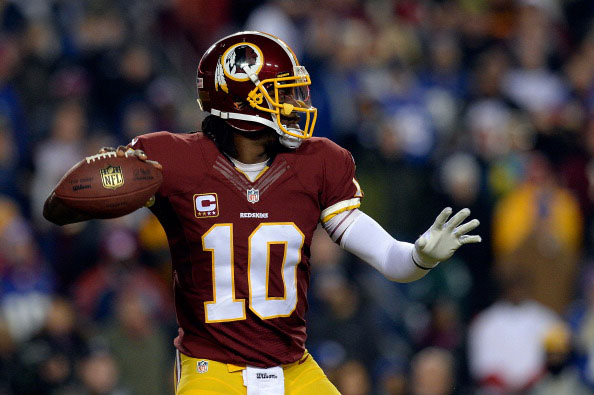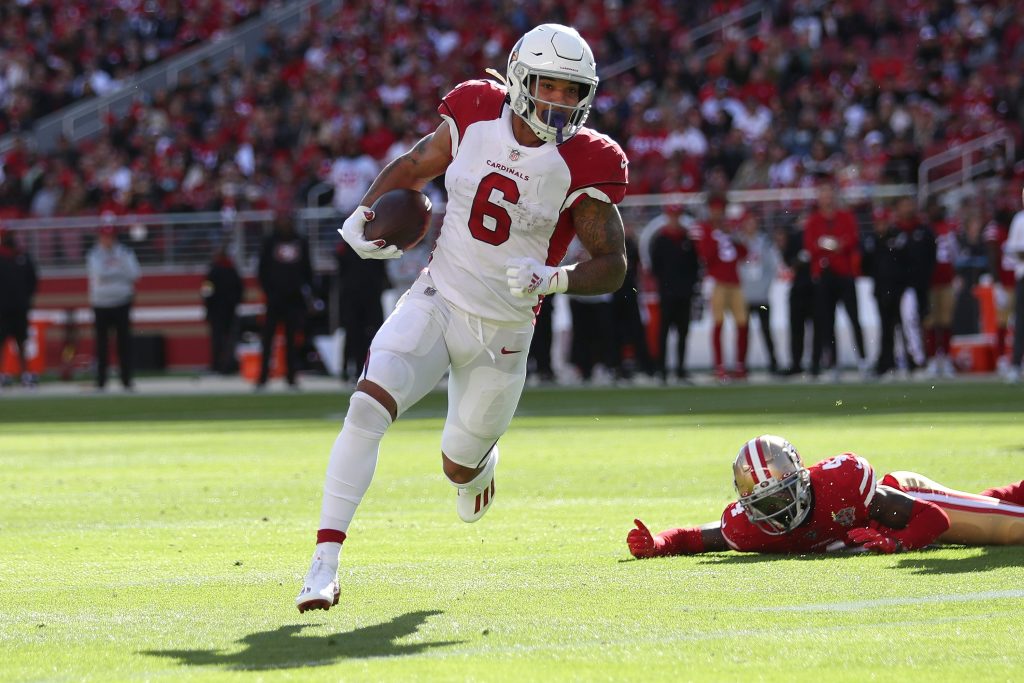As the fantasy season ends, there are two types of owners: champions and the 90-plus percent of owners who did not win a trophy in their league.
Maybe you had a disappointing season that never got off the ground. Perhaps you fell a week short of competing for the crown. You might have thought you had your title locked up until Najee Harris ran a late, meaningless touchdown into the end zone this past Monday night.
Whatever the situation, if you couldn’t hang a banner in 2021, you are left with a simple question: what do I do with this team to win in the future?
For many teams, this may be the end of the road. You gave it one more run in 2021, but it is time to move on from some of your older players. It’s time to get younger. It’s time to rebuild.
Rebuilding can be a tough situation. Depending on the other owners and teams in your league, it may be much easier or harder to do. But some general tips can help you in any league to try and start the rebuilding process. Let’s break it down.
Where to Start
First and foremost, rebuilding involves deciding to fully commit to rebuilding. If you want to re-tool a few positions, I’m all for that. But if we are truly rebuilding, you have to be ready to sell…a lot.
One of the biggest advantages to a rebuilding roster is committing to being a bad team. I never advocate throwing games by not starting your best roster. But trading away all your best assets to ensure your team will struggle to win is never against the rules. Committing to being bad means you will have top draft stock in your rookie draft; the most significant advantage a rebuilding team can have.
Separate from that, selling off your top players means you will be acquiring a lot of picks. More picks equal more bullets in the chamber. You want as many shots at young players joining the league as you can get. There is no limit to draft picks you should want to acquire. Give me the entire rookie draft for a given year if I can have it!
Also, clearing roster room ensures you have the roster space to let players sit and develop. Imagine how many teams benefitted from having Elijah Mitchell, James Robinson, Hunter Renfrow, or Dalton Schultz on their roster this year. All of these players are guys you could have grabbed in free agency at one point or another in your leagues the past few years. If you have the roster space because your team is not competing, you can hang onto all sorts of prospects that could end up being worth a whole lot more than their value when you acquired them.
I am saying this: when you decide you are going to start a rebuild, you have to go all in. There is no half rebuild or partial rebuild that will have the full effect on your team. There will be some rough years, trust me. But you go through the bad years to get to the good years. Be ready to be bad and be willing to have a very ugly roster for a time.
No One is Sacred
One of the hardest things you will need to remember when rebuilding is there isn’t a single player you are rostering that you shouldn’t be willing to move. None.
The advantage of rebuilding is that you are not looking to currently compete. If you can move a player and get top value for them, you should always be willing to do so.
Now there is a caveat to that. When I say getting top value, I mean the top value you think that player could be worth. This applies specifically to younger players.
Take a player like DeVonta Smith, for example. He had a solid rookie year. He looks like he could be a pretty good pro. If someone offers you a high first-round pick and a second-round pick right now, that is probably what he is worth at the current moment. But if you believe that he will be a star and is worth at least two firsts, hold until you get that value.
If the right value comes along, you should always be willing to move anyone. The reason is simple: risk vs. reward.

Imagine hanging onto RGIII in a rebuild after his rookie year because you believed he was your franchise’s future.
Every single player on your roster is at risk of being completely worthless at the drop of a hat. Torn Achilles, trouble with the law, lengthy suspensions, you name it, players lose their value all the time. A guy worth a first today may be worth a third tomorrow.
Think of your players like a new car. The second you drive it off the lot, the value is depreciating. You should always do it if you can get top value for your asset as a rebuilding franchise. Your competitive window isn’t tomorrow; it’s two years from now. That player will not be worth what he is now in two years.
Comparing this to the reward of hanging onto an asset and hoping he becomes worth a bit more, it just isn’t worth it. Play the odds. Make sure you are always staying ahead of the decline.
Some owners like building block pieces in their rebuild; players to build their new team around. This is a sensible tactic. You want to build around young players. But none of these building blocks need to be made of stone. If you can move any player at what you think their top value is, you always do it in a rebuild. You’ll thank yourself later.
Never Stop Improving
In September, I wrote about the long rebuild I had done in my home league that was entering its 15th year. Looking back on it, it is funny how much that team changed even within this past season.
Every position listed in that article had a major change by the end of the year. At QB, Burrow became Rodgers. At RB, David Montgomery and Javonte Williams left, and Saquon Barkley, James Conner, Christian McCaffrey, and Rashaad Penny joined up. And at WR, the only WR listed I still have is Ja’Marr Chase, as I added Justin Jefferson and Chris Godwin during the year.
The lesson here is this: your rebuild never fully stops. From the moment you intend to rebuild, you should constantly look for ways to improve your team. When rebuilding, you will acquire a lot of picks and young players. Eventually, when your roster gets stronger, you will have a choice to make: continue down the path of youth or trade-off some of the young talent to try and win now.
In my circumstances in this particular league I wrote about in September, an opportunity opened to win now. Several teams were breaking their rosters down and selling off talented assets. With only a few true competitors in the league, I thought it was best to make my move immediately and go for a ship.

Finding an affordable asset like James Conner can pay huge dividends when your starting roster sputters or gets hurt.
It worked. It doesn’t always, but it did for me.
The point is that you must continuously be evaluating your league and your team. Figure out how strong your roster is compared to other teams. Be ready to buy players from teams looking to rebuild themselves. And never rest on your laurels. Even when you are undefeated and the favorite to win the title, you can always improve your team.
The team I wrote about in September had some major hiccups this year: I lost CMC, Godwin and had a very ineffective Barkley after he returned from an injury. But I was constantly searching for depth and making moves where I could in the season. Before he was relevant, I acquired James Conner for a couple of thirds early in the year. I picked up Rashaad Penny off waivers when he became the lead guy in Seattle. I traded a third for Dalton Schultz when he emerged as the TE1 in Dallas.
You have to always be looking to improve at every moment. Once you are going for it in your rebuild, you are never done making moves. Dynasty football changes week-to-week and game-to-game. You always want to be on the lookout for any way to improve your team, even if it is for one extra point per week.
Summary
My philosophy is that there are two stages for your team in dynasty: competing or rebuilding. When I say competing, I mean a top three or four team. Sneaking into the playoffs and losing in the first round is dynasty purgatory; not being good enough to win and not being bad enough for a top-three pick in the rookie draft.
If you even think it might be time to rebuild, it probably is. The longer you wait, the less you will get in return for the guys you trade away.
But you have to be ready for a couple of tough years. The middle of a rebuild is the worst part. The beginning is exciting as you trade high-caliber pieces for big returns. The end is when you see all the hard work pay off. But in the middle of a one or two-win season with not a lot of talent rostered on your team, a rebuild can be tough.
But a proper rebuild relies on total commitment. Prepare to trade anyone. Be ready to make a move whenever proper value presents itself. Don’t make a single-player untouchable. And, most importantly, always be looking to improve when you are starting to compete again.
If you are thinking of starting a rebuild of your own and want an extra opinion, reach out to me on Twitter: @timbmartens. And make sure to stick with Dynasty Nerds. The Nerds have been committed to giving you strong analysis on incoming rookies and undervalued players in the NFL for years and were always a great source for me in my own rebuilds.








